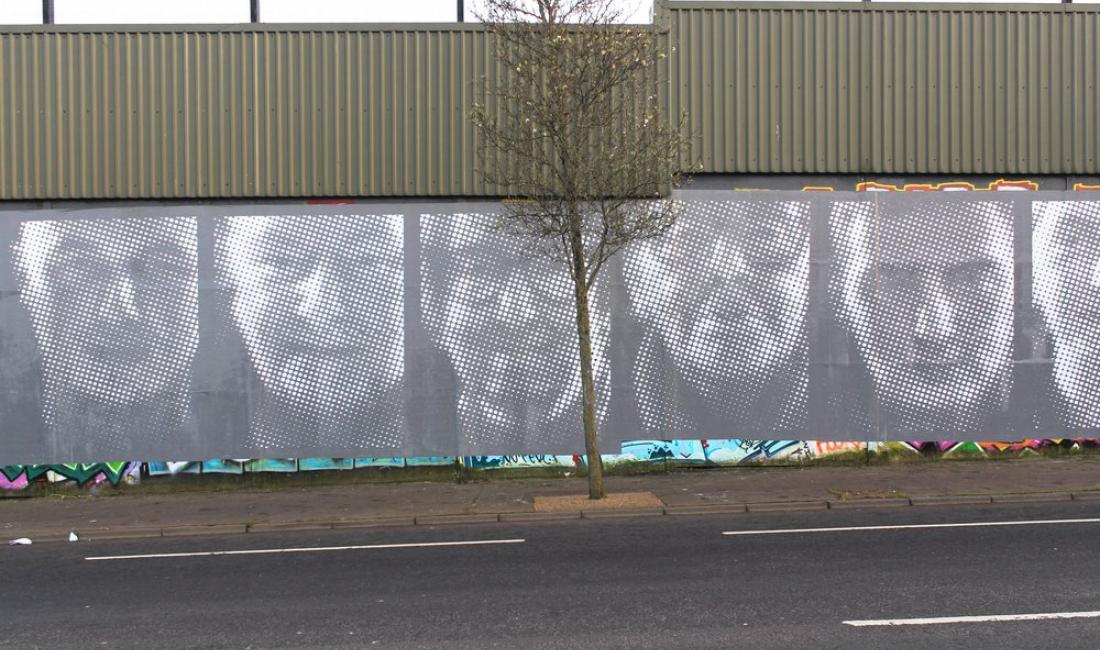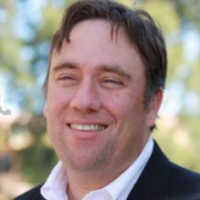Democracy in divided cities requires remembering and forgetting.
To govern a divided city, you need to balance your remembering with some forgetting.
That was my takeaway after moderating a recent public event that used Zoom to link live audiences in two famously divided cities, on opposite sides of the world.
One city, Belfast, is a place so full of physical divisions that the differences between people can feel inescapable. The other, Los Angeles, lacks a shared historical memory and thus manages to forget the depth and persistence of its divides.
Of course, these are two very different places. The city of L.A., with a population of 4 million, has 10 times as many people as Belfast and twice as many as all of Northern Ireland. But both are fast-paced, aggressive places that produce a lot of art. L.A. is Hollywood, and Belfast is a UNESCO City of Music (thanks, Van Morrison), and a center of literature (from C.S. Lewis to Sinéad Morrissey) and TV/film production (Game of Thrones).
And they face similar predicaments.
Both cities are defined, locally and internationally, by long histories of internal unrest and violence. The whole world watched L.A.’s riots in 1965 and 1992 (the latter the largest urban riot in U.S. history). And the whole world followed news of the Troubles, one of the 20th century’s most violent and longest conflicts, between pro-United Kingdom Protestants and pro-secession Catholics.
Over the past generation, both cities have celebrated progress in bridging divides. L.A. rebuilt South L.A. after the 1992 riots, and the city has seen greater diversity among its political elites. Meanwhile in Belfast, the 1998 Good Friday Agreement ended the Troubles, disarming violent groups and creating power-sharing between Protestants and Catholics.
But in the past decade, and especially during the pandemic, both cities experienced renewed divisions—racial and ethnic in Los Angeles, sectarian in Belfast. And those divisions have paralyzed governments in both cities.
Trying to understand how each city got to this point, our event began by turning the clock back a decade, to 2013, when both cities had more hope—at least, officially. That was when departing Los Angeles mayor Antonio Villaraigosa declared that his city had gotten past its bigger problems, with “the old Los Angeles is fading in the rear-view mirror.”
That same year, leaders in Northern Ireland pledged to remove all of the physical walls and barriers separating Protestant and Catholic communities in Belfast within a decade—by the year 2023. They also promised to desegregate a city divided by religion.
Triumphalism in L.A. and Belfast did not wear well. Divisions have proved more durable than either city’s leadership anticipated.
In Belfast, stability and optimism waned after 2016’s Brexit, when Northern Ireland voted narrowly to remain in the European Union, but Britain as a whole voted to leave. A 2017 energy scandal then forced new elections, which produced a split result between the leading Protestant and Catholic parties causing persistent governmental dysfunction and inoperation. Since the 2022 elections, Northern Ireland has not had a government.
That lack, combined with Brexit-related cuts, has diminished government services, including vital health programs. And amidst the political turmoil, polls show rising sectarian divisions. This is true especially among the young, who were already too divided; less than 10% of Belfast children attend religiously integrated schools.
No wonder the walls dividing communities did not come down as promised this year, as people continue clinging to separation and the promise of security. Indeed, as I saw firsthand during a visit last year, Belfast has erected new divides—most of the “peace walls” now in place were constructed after the Good Friday Agreement.
A world away, Los Angeles also has gone backward. Racial, ethnic, and generational divisions grew more pronounced during the Trump presidency and in the pandemic, which saw more attention to high-profile local cases of police violence, as well as the Minneapolis murder of George Floyd.
Last year, a Loyola Marymount University survey found big increases in the percentage of Angelenos who say race relations are getting worse. Over two-thirds of Angelenos told pollsters that they expect to see new racial unrest, like what the city experienced in 1992.
Then came the leaked tape of Los Angeles County’s top labor official and three L.A. city councilmembers saying bigoted things about almost every major racial or ethnic group in the city—a recording that all but brought the L.A. city government to a standstill for months. Unrelated federal corruption investigations have ensnared a third of the city council, adding to the difficulty of getting anything done. Meanwhile, public anger grows at the city’s inability to handle increasing crime and homelessness.
A recent event linked the struggles of the two cities, organized by Imagine! Belfast (a democracy and ideas festival) and the Huntington Institute on California and the West at the University of Southern California. Panelists and audiences in both cities (one audience sat in Belfast’s Accidental Theater, the other at a USC library) lamented their divides but also offered ideas for progress that involved leaving some parts of the past behind but keeping those that might serve communities in the future.
Belfast’s many walls make divisions seems permanent and unchangeable, said Duncan Morrow, a lecturer and conflict mediator at Ulster University. But how can Belfast remove barriers that some people believe keep them safe? Perhaps, if walls can’t be removed, new integrated spaces and institutions can be built on top of them, Morrow suggested.
Los Angeles panelist Joumana Silyan-Saba, director of policy and enforcement at L.A. Civil Rights, said that divisions in L.A. are usually covert, and not confronted, until they “manifest as intercommunal divides, intracommunal divides, and—in the worst forms—they also manifest in civil unrest and violence.”
That argues for memorializing more of the city’s past conflicts, and making L.A. divisions more visible so that Angelenos must reckon more directly with them. Forgetting divisions in the name of getting along can sometimes make it harder to get things done. Silyan-Saba recounted how many conversations it took to gain widespread community support for the Expo Line through South L.A. and the large, ongoing expansion of L.A.’s Metro rail system.
Panelists and audience members in both Belfast and Los Angeles seemed most pessimistic about the ability of local governments to transcend divides (though Southern Californians were upbeat about L.A.’s new mayor Karen Bass and her devotion to getting Angelenos to “lock arms together”).
To a remarkable degree, Belfast and Los Angeles participants agreed that making progress in divided cities is unlikely to come from politicians. Instead, people themselves, through their institutions and organizations and movements, must lead the change. Belfast artist and photographer Stephen Wilson said that it was still important for divided governments to provide long-term resources to neighborhoods and promising individuals. “You don’t know who will turn into leaders in the future,” he said.
“The greatest power that we have is our civil society,” said USC sociologist Jody Agius Vallejo. “These dividing lines are created. They’re created over time. They’re created historically. They’re created to make advantages for some. And because they aren’t natural, we can change them.”




